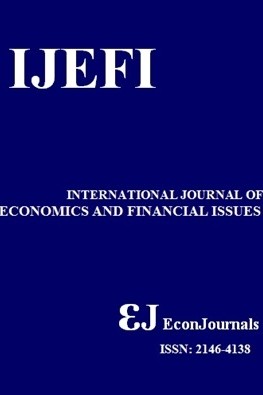Fundamentals and the Equilibrium of Real Exchange Rate of an Emerging Economy: Estimating the Exchange Rate Misalignment in Malaysia
Fundamentals and the Equilibrium of Real Exchange Rate of an Emerging Economy: Estimating the Exchange Rate Misalignment in Malaysia
exchange rate DOLS, misalignment, Consumption expenditure,
- Başlangıç: 2011
- Yayıncı: İlhan ÖZTÜRK
Testing the Permanent Income and Random Walk Hypotheses for Turkey
Faik BİLGİLİ, Hayriye Hilal BAĞLITAŞ
Creation of Provision for Doubtful Debts
Yuriy Ivanovich Sigidov, Marina Aleksandrovna Korovina, Aleksander Ivanovich Trubilin, Viktor Vilenovich Govdya, Nadezhda Konstantinovna Vasilieva
Price of Political Uncertainty: Evidence from Ghanaian Treasury Bills
Assessment of the Level of Economic Security in the Conditions of Uncertainty
Anna V. ORLOVA, Julia V. LYSHCHİKOVA, Yevgenia V. NİKULİNA, Yevgeny İ. ANOKHİN
Pei-Tha Gan, Nyuk-Ling Lee, Mohd Yahya Mohd Hussin, Norimah Rambeli
The Management of Drinking Water and Long-term Perspective: Tunisia Case
Board Characteristics and Sustainability Reporting: Environmental Agencies’ Moderating Effects
Alhassan Haladu, Basariah Bt. Salim
A Dynamic Model Approach of Securitization and the Financial Crisis
